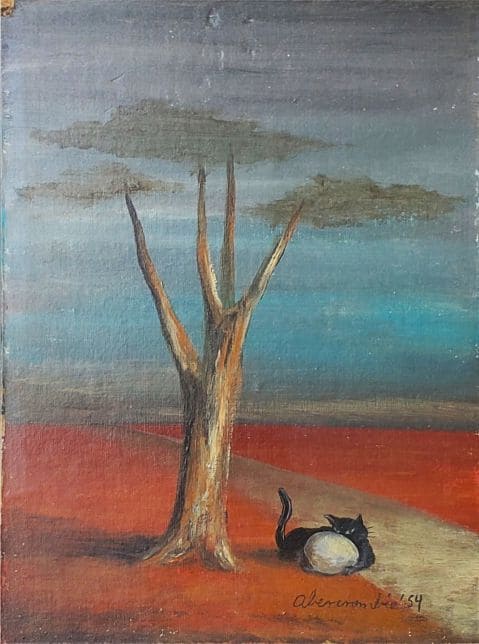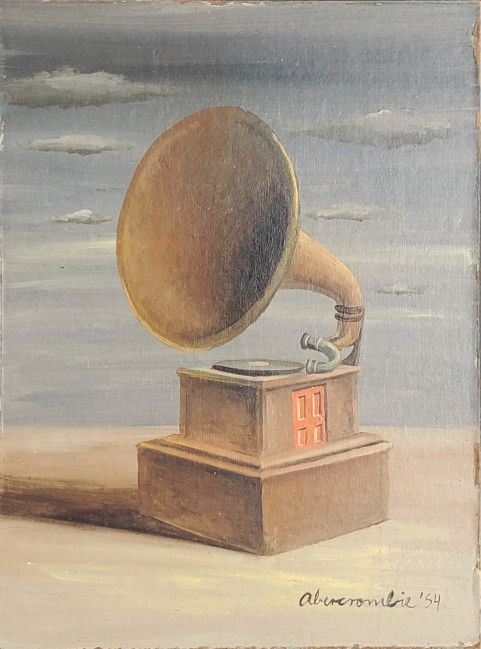
Although she freely changed the color; she always had a number of cats in her household, and identified with them deeply (when she was expecting her daughter Dinah, she said she could imagine giving birth to a cat, but not a human); and the barren tree with low clouds almost serving a dual function as foliage, as well as the eerie path leading nowhere is a meaningful and repeatedly used setting.

There are other elements in the painting that are familiar from Abercrombie’s oeuvre as well. The ascetic foreground and background is a meaningful and repeatedly used setting reflecting the artist’s inner emptiness and insecurity, the mysterious orange door on the
device challenges the viewers perception of scale.